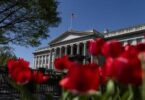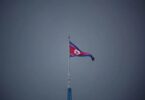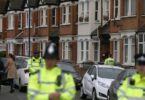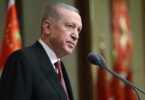Monitoring Desk
SINGAPORE: As Singapore wins global plaudits for its handling of the coronavirus, the disease has spread rapidly within its large migrant worker community, highlighting what rights groups say is a weak link in the city state’s containment efforts. Singapore has managed to mitigate the spread of the disease among its citizens by rigorous contact tracing and surveillance, earning praise from the World Health Organization. Infections within the migrant community, however, are mounting. As of April 14, out of 3,252 cases recorded in Singapore, 1,625 were linked to outbreaks in migrant worker dormitories.
Rights groups, charities and medical experts had flagged the potential for mass infection among the more than 300,000 migrant workers living in often cramped and unsanitary conditions in the wealthy country of 5.7 million. But some of Singapore’s early policy responses did not account for this vulnerable community, according to rights groups and volunteer organisations. For example, a Singapore government order restricting doctors to single hospitals to prevent them spreading the virus sharply reduced volunteer health services depended upon by some workers, they said.
And a nationwide mask distribution at the start of the outbreak excluded migrant workers living in dormitories. Moreover, measures introduced recently to confine tens of thousands of workers to packed quarters may increase the risk of infection spread, they added. “We are definitely concerned that this approach exposes a lot more migrant workers to the risk of contracting COVID-19,” said Rachel Chhoa-Howard, a Singapore researcher for the rights group Amnesty International.
The authorities say they have taken preventative measures to address personal hygiene, inter-mingling and disease detection in migrant housing but that their decision to quarantine thousands of workers was necessary once the virus started spreading. Singapore’s health and manpower ministries did not respond to specific questions for this article. Both referred Reuters to previous statements they had made on their virus containment measures. The situation in the migrant dormitories highlights the different standards applied to the mainly Bangladeshi and Indian manual workers whose labour has helped build the glitzy, modern city-state, and the rest of the population.
The government has put up Singapore residents returning from overseas in expensive hotels to limit contagion. Some migrant workers have been confined to bunk rooms that they said had blocked toilets and overflowing refuse bins. The Ministry of Manpower has said it faced “challenges” at the start of the quarantine related to hygiene and the supply of food in the dormitories, but that it had been working with operators to improve conditions. Prime Minister Lee Hsien Loong said in an address on April 10 that Singapore appreciated the efforts of its migrant workers, and that they would continue to be paid while in quarantine.
Some workers depended on getting healthcare at subsidised clinics run by a charity called HealthServe, staffed with volunteer doctors and nurses. But when the government issued a directive on Feb 7 saying that public hospital staff had to restrict their work to one hospital to prevent cross contamination, HealthServe said it had to scale back operations, depriving some of the most needy workers of medical care. HealthServe – which offers consultations for S$8 ($5.65), compared with around S$50 at government clinics – said it had to reduce services by 90% and close two of its three clinics. (Reuters)






